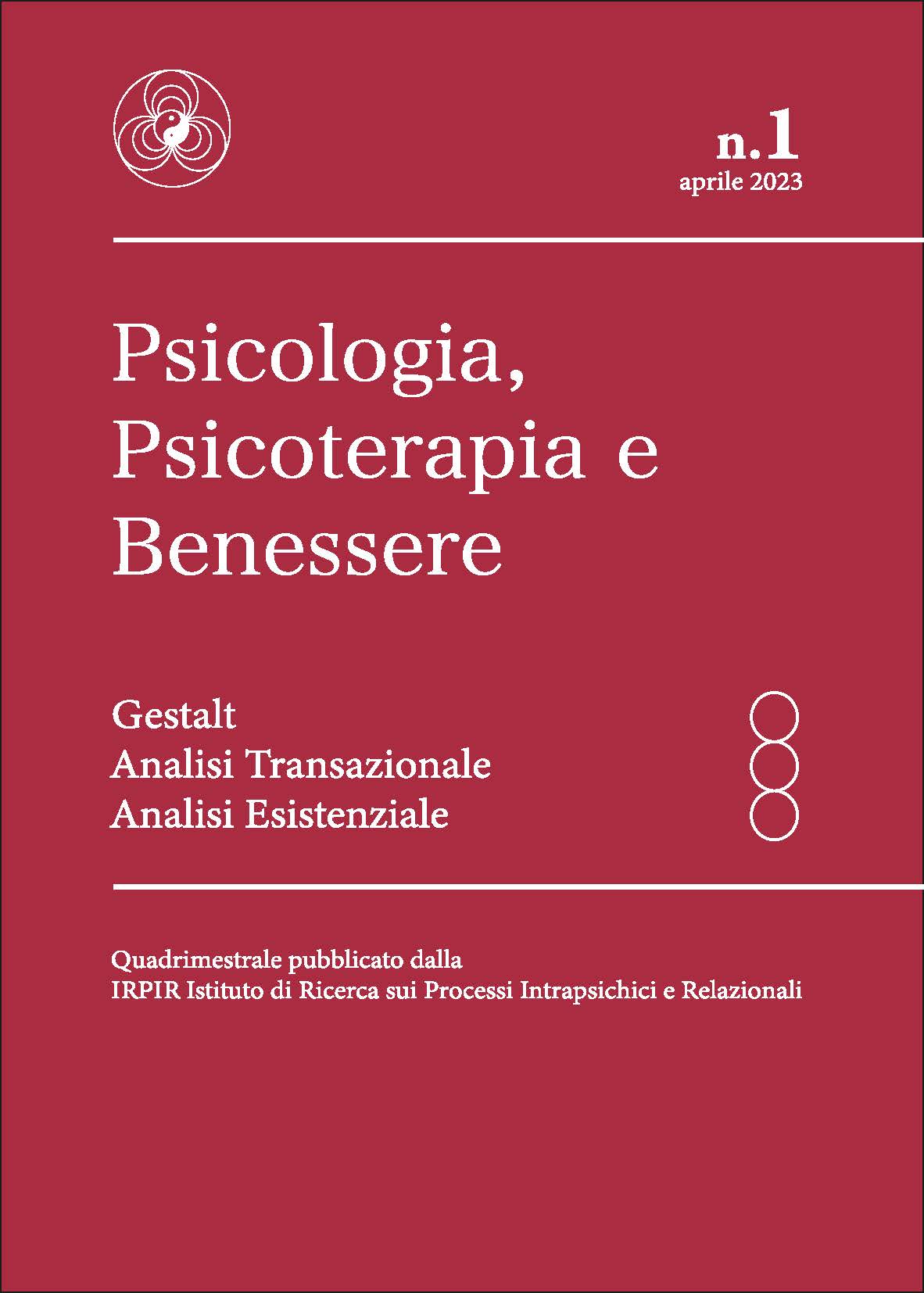Changing processes of emotional memories in the light of the Coherence Therapy and the Emotion-Focused Therapy
Keywords:
neuroplasticity, Memory Reconsolidation, Transformational change, Coherence Therapy, Emotional Focused TherapyAbstract
Changing emotional memories is central to psychotherapy. Recent neuroscientific discoveries on memory reconsolidation (Pedreira et al., 2004) have highlighted the possibility and the necessary conditions to achieve a transformative change of aspects of an emotional nature, laying the foundations of fundamental importance for clinical relapses.
The article intends to identify the key processes of emotional memory change, in the light of Coherence Therapy (CT) (Ecker, Ticic & Hulley, 2018) and Emotional Focused Therapy (EFT) (Greenberg, 2000), making use of theoretical elements, methodological and clinical examples. Also will be presented an excerpt from therapeutic work by Leslie Greenberg using EFT and commented by Bruce Ecker et al. (ib.) in terms of the procedural steps described by the CT. It will be clear that the change in deep emotional patterns promoted by EFT can be explained in terms of the steps indicated by Coherence Therapy, which can therefore be considered a metamodel for emotional change.
The article shows how neuroscientific research on memory reconsolidation has shed light on central aspects for clinical practice and for the teaching of procedural processes that aim to implement the transformative processes of emotional memories in psychotherapy, promoting a virtuous circle between research, clinic and training.
References
Bouton, M. E., Swartzentruber, D. (1989). Slow reacquisition following extinction: Context, encoding, and retrieval mechanisms. Journal of Experimental Psychology: Animal Behavior Processes, 15, 43–53. https://doi.org/10.1037/0097-7403.15.1.43
Bouton, M. E. (2004). Context and behavioral processes in extinction. Learning & Memory, 11(5), 485–494. https://doi.org/10.1101/lm.78804
Brewin, C. R., Dalgleish, T., Joseph, S. (1996). A dual representation theory of posttraumatic stress disorder. Psychological review, 103(4), 670. https://doi.org/10.1037/0033-295X.103.4.670
Cacciari, C., Papagno, C. (2006). Psicologia generale e neuroscienze cognitive. Manuale per le professioni medico-sanitarie. Il Mulino.
Chen, W. [et al]. (2018). Effects of prediction error on post-retrieval extinction of fear to compound stimuli. Acta Psychologica Sinica, 50(7), 739-749. https://doi.org/10.3724/SP.J.1041.2018.00739
de Nitto, C. (2006). Il processo ridecisionale alla luce di una teoria integrata delle emozioni in L’Arte della Psicoterapia. Itinerari di formazione alla psicoterapia secondo un’ottica analitico-transazionale integrata. LAS
Ecker, B. (2018). Clinical translation of memory reconsolidation research: Therapeutic methodology for transformational change by erasing implicit emotional learnings driving symptom production. International Journal of Neuropsychotherapy, 6(1), 1–92. DOI: 10.12744/ijnpt.2018.0001-0092
Ecker, B., Hulley, L. (2019) Coherence Therapy Manuale pratico & guida per la formazione. (Bastianelli, L. & Soria, S., Trad) Coherence Psychology Institute. (Opera originale pubblicata nel 2017)
Ecker, B., Toomey, B. (2008). Depotentiation of symptom-producing implicit memory in Coherence Therapy. Journal of Constructivist Psychology, 21, 87-150. DOI: 10.1080/10720530701853685
Ecker, B., Toomey, B. (2007). Of neurons and knowings: Constructivism, coherence psychology, and their neurodynamic substrates. Journal of Constructivist Psychology, 20(3), 201-245. https://doi.org/10.1080/10720530701347860
Ecker, B., Hulley, L. & Ticic, R., (2018). Sbloccare il cervello emotivo: Eliminare i sintomi alla radice utilizzando il riconsolidamento della memoria. Franco Angeli.
Greenberg, L. S., Malcom, W. (2002). Resolving unfinished Business: Relating process to outcome. Journal of Consulting and Clinical Psychology, 70(2), 406. https://doi.org/10.1037/0022-006X.70.2.406
Greenberg, L. S. (2004). Emotion-focused therapy. Clinical Psychology and Psychotherapy, 11, 3-16. https://doi.org/10.1002/cpp.388
Greenberg, L. S. (2006). Emotion-focused therapy: A synopsis. Journal of Contemporary Psychotherapy, 36(2), 87-93. https://doi.org/10.1002/cpp.388
Greenberg, L. S. (2010). Emotion-Focused Therapy: A Clinical Synthesis. The journal of lifelong learning psychiatry, 8(1), 32-42. https://doi.org/10.1176/foc.8.1.foc32
Greenberg, L. S. (2015). Emotion-Focused Therapy: coaching clients to work through their feelings (2 Ed.). American Psychological Association.
Greenberg, L. S., Rice, L.., N., Elliot, R. (2000). I processi del cambiamento emozionale. LAS.
Greenberg, L. S., Meneses, C. W. (2021). Perdonare e lasciare andare nell'Emotion-Focused Therapy (EFT). Franco Angeli.
Gurvits, T. V. [et al]. (1996). Magnetic Resonance Imaging Study of Hippocampal Volume in Chronic, Combat-Related Posttraumatic Stress Disorder. Biological Psychiatry, 40(11), 1091-1099. https://doi.org/10.1016/S0006-3223(96)00229-6
Janet, P. (1973). L’automatisme psychologique: essai de psychologie experimentale sur les formes inferieures de l’activite humaine. Felix Alcan.
Kreiman, G., Koch, C., Fried, I. (2000). Imagery neurons in human brain. Nature, 408, 357361. https://doi.org/10.1038/35042575
Le Doux, J. E., Romanski, L., Xagoraris, A. (1989). Indelibility of subcortical emotional memories. Journal of Cognitive Neuroscience, 1(3), 238-243. https://doi.org/10.1162/jocn.1989.1.3.238
Leventhal H. (1984). A perceptual-motor theory of emotion. In L. Berkowitz, Advances in experimental social Psychology. Academic Press.
McClure Goulding, M., Goulding, R.L. (1979). Changing lives through Redecision Therapy. Brunner/Mazel.
Nader, K., Schafe, G. E., Le Doux, J. E. (2000). Fear memories require protein synthesis in https://doi.org/10.1038/35021
Pedreira, M. E., Perez-Cuesta, L. M., Maldonado, H. (2004). Mismatch between what is expected and what actually occurs triggers memory reconsolidation or extinction. Learning e memory, 11, 579-585. https://doi.org/10.1101/lm.76904
Schiller, D. [et al]. (2010). Preventing the return of fear in humans using reconsolidation update mechanism. Nature, 463, 49-53. https://doi.org/10.1038/nature08637
Schore, A. N. (2003). Affect dysregulation and disorders of the self. W.W. Norton & Co.
Siegel, D. J. (2021) La mente relazionale. Neurobiologia dell’esperienza interpersonale (3. Ed.). Raffaello Cortina.
Stern, D. (1985). The interpersonal world of the infant. Basic Books.
Van Der Kolk, B. (2009). Il corpo tiene il conto. Introduzione alla psicobiologia del disturbo post-traumatico da stress, in Williams, R., (2009). Trauma e Relazioni. Le prospettive scientifiche e cliniche contemporanee. Raffaello Cortina.
Voss, J. L., Paller, K. A. (2008). Brain substrates of implicit and explicit memory: The importance of concurrently acquired neural signals of both memory types. Neuropsychologia, 46, 3021-3029. https://doi.org/10.1016/j.neuropsychol
Downloads
Published
How to Cite
Issue
Section
License

This work is licensed under a Creative Commons Attribution-NonCommercial 4.0 International License.






